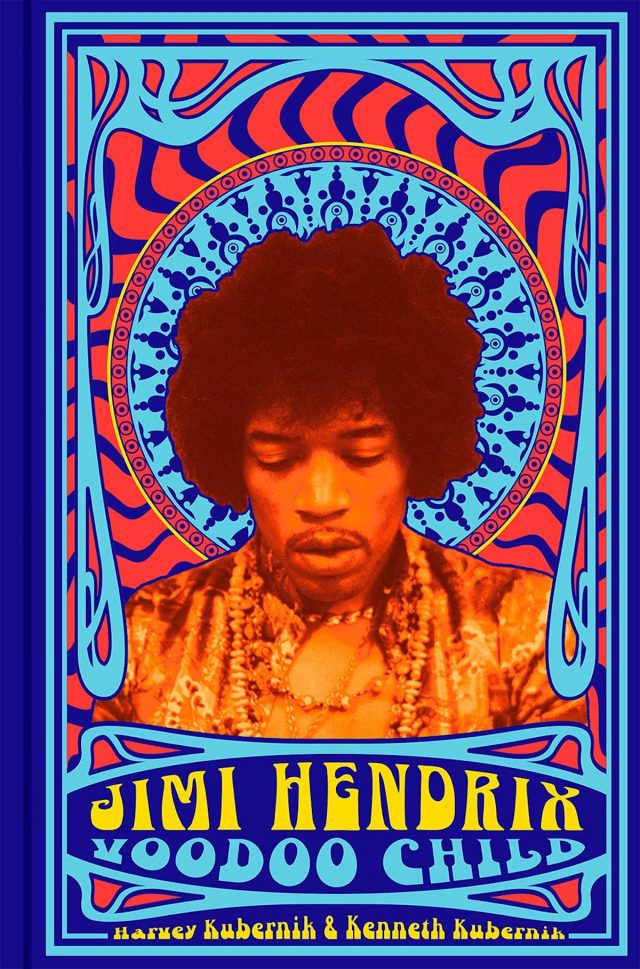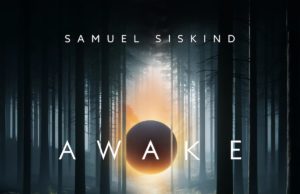Classic rock and classical music dominate the proceedings next week. Not that there’s anything wrong with that. Here are the latest additions to your reading list:
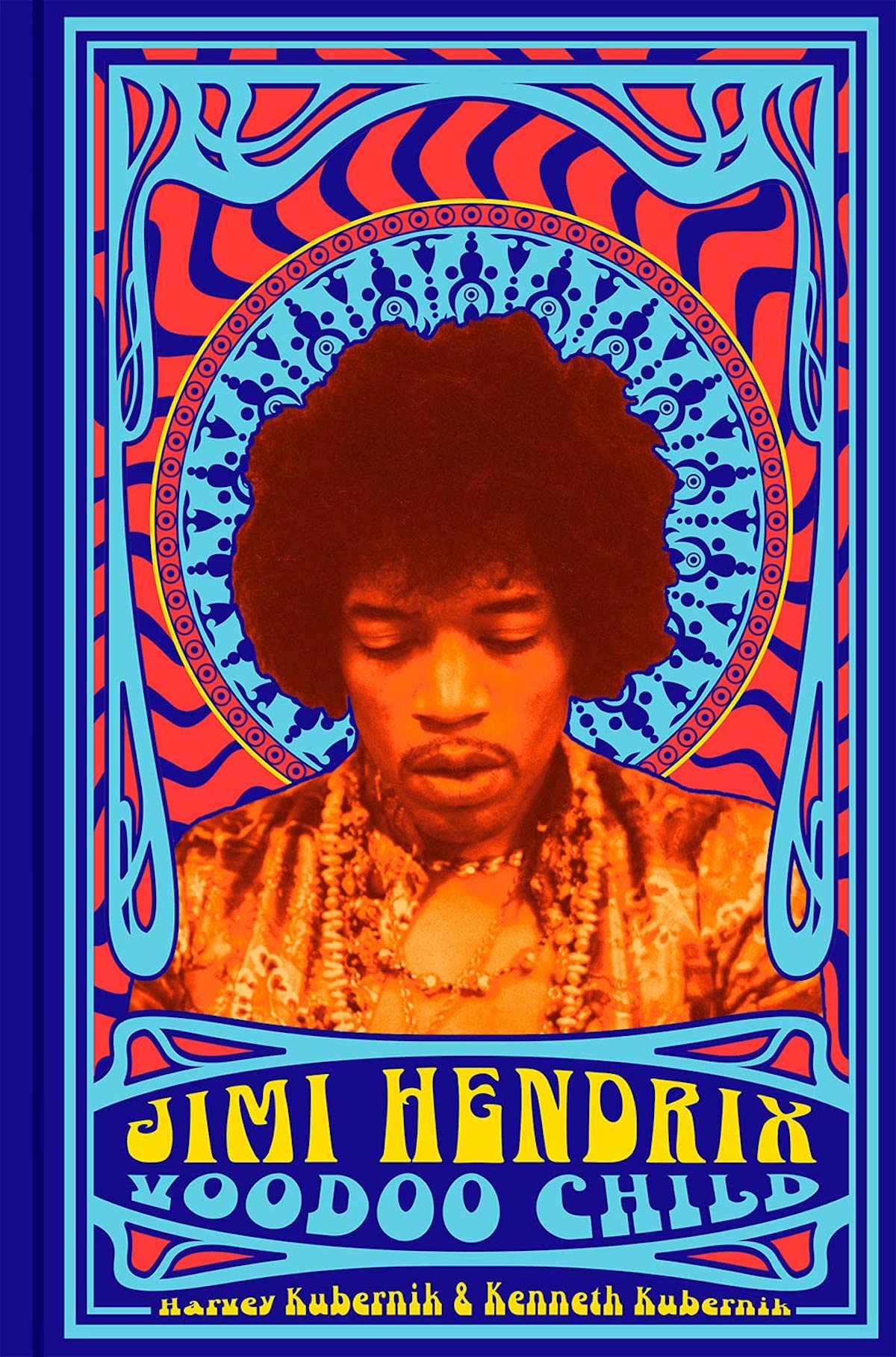 Jimi Hendrix: Voodoo Child
Jimi Hendrix: Voodoo Child
By Harvey Kubernik & Ken Kubernik
THE EDITED PRESS RELEASE: “The legendary Jimi Hendrix shook the music world to its very soul as a musical and lyrical innovator, until his untimely death in 1970 at only 27 years of age. Yet his body of work remains timeless and universal, touching old and new fans alike. In this unprecedented volume, acclaimed rock journalists Harvey and Kenneth Kubernik celebrate Hendrix: His life, his music, and his legacy. Their multi-voice narrative weaves together his incredible story. There are fascinating behind-the-scenes contributions from the scenemakers and musicians of the time, including previously unpublished excerpts from interviews with the recording, producing, and engineering principals from throughout Hendrix’s career, with a focus on his music.”
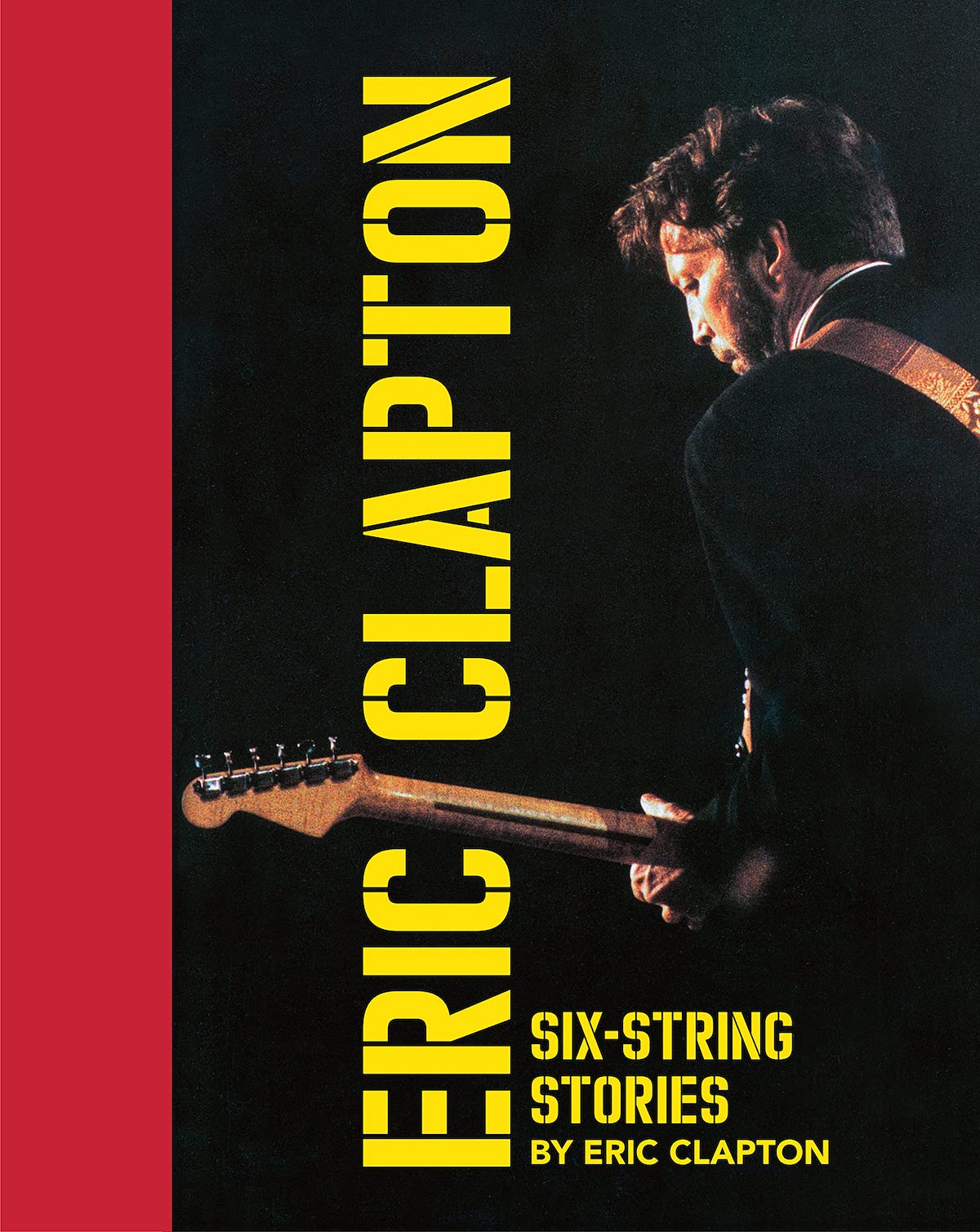 Six-String Stories
Six-String Stories
By Eric Clapton
THE EDITED PRESS RELEASE: “In Six-String Stories, Eric Clapton reflects on a legendary career as told through the tools of his trade: His guitars. Collected together here for the first time are the instruments Clapton sold in three record-breaking auctions between 1999 and 2011 to benefit the Crossroads treatment centre he founded in 1998. Featuring some of the most famous guitars ever played, Clapton guides the reader through nearly 300 instruments as he discusses their provenance, reveals insights about his own playing, and sharesanecdotes from each chapter of his spectacular life in music. Six-String Stories presents a ‘family tree’ that makes connections between iconic instruments, such as Clapton’s famous ‘Blackie’ Stratocaster, and previously unknown rarities, placing them in the chronology of his career. Clapton recalls the instruments he bought to emulate his heroes, the guitars with unknown origins that became their own legend, the ones that never left his side, and the legacy they left behind. Every piece has been individually photographed, revealing every curve, detail and scratch, while the work of over 80 of the world’s best rock photographers shows the instruments in play. See Clapton’s evolution from the psychedelic ’60s, through the stripped-back ’70s, electric ’80s, and unplugged ’90s, right up to the sale of the last guitar. Historical and technical information for each piece in the collection — including playlists and concert dates for those instruments used on records and at public appearances — completes the story behind each guitar.”
 Song for Jimi: The Story of Guitar Legend Jimi Hendrix
Song for Jimi: The Story of Guitar Legend Jimi Hendrix
By Charles R. Smith Jr & Edel Rodriguez
THE EDITED PRESS RELEASE: “From his turbulent childhood through his epical appearance at the Monterey and Woodstock festivals, Charles R. Smith Jr. covers it all in this rich and rhythmic account of a singular life, accompanied by the psychedelic splendor of Edel Rodriguez’s acid-tinged artwork. Written as a series of verses beginning with intro and ending with outro, this unique mix of rhythm and rhyme captures the essence of rock icon Jimi Hendrix and his struggle to live life on his own terms.”
 Eric Clapton Solo: Every Album, Every Song
Eric Clapton Solo: Every Album, Every Song
By Andrew Wild
THE EDITED PRESS RELEASE: “Of all of the ‘classic’ British rockers who came to prominence in the 1960s, only a very few have achieved significant, sustained success through to the present day. A list that comprises Paul McCartney and The Rolling Stones should also include Eric Clapton. His critical and commercial accomplishments with John Mayall’s Bluesbreakers, Cream, Blind Faith and his first solo album between 1965 and 1970 was followed the inexplicable failure of the Layla album, released under the semi-pseudonym of Derek & The Dominos. Clapton withdrew into heroin addiction for several years. In 1974, his ‘comeback’ album, 461 Ocean Boulevard, returned him to the top three in both the U.K. and America. Always a strong concert draw, Clapton has released another 12 Top 20 albums since. Even Layla returned to the charts in 1982. Eric Clapton Solo reviews and analyses all of Clapton’s studio albums since 1974, as well as successful collaborations with B.B. King and JJ Cale. It’s been a long, varied journey: The laid-back rocker of the 1970s; the commercial sheen of the 1980s; the polished, acoustic yuppie music and hard blues of the 1990s; the slick R&B stylings of the 2000s and the roots homages of the 2010s. All of this was underpinned by the skill and talent of Britain’s greatest blues guitarist and a hugely underrated vocalist.”
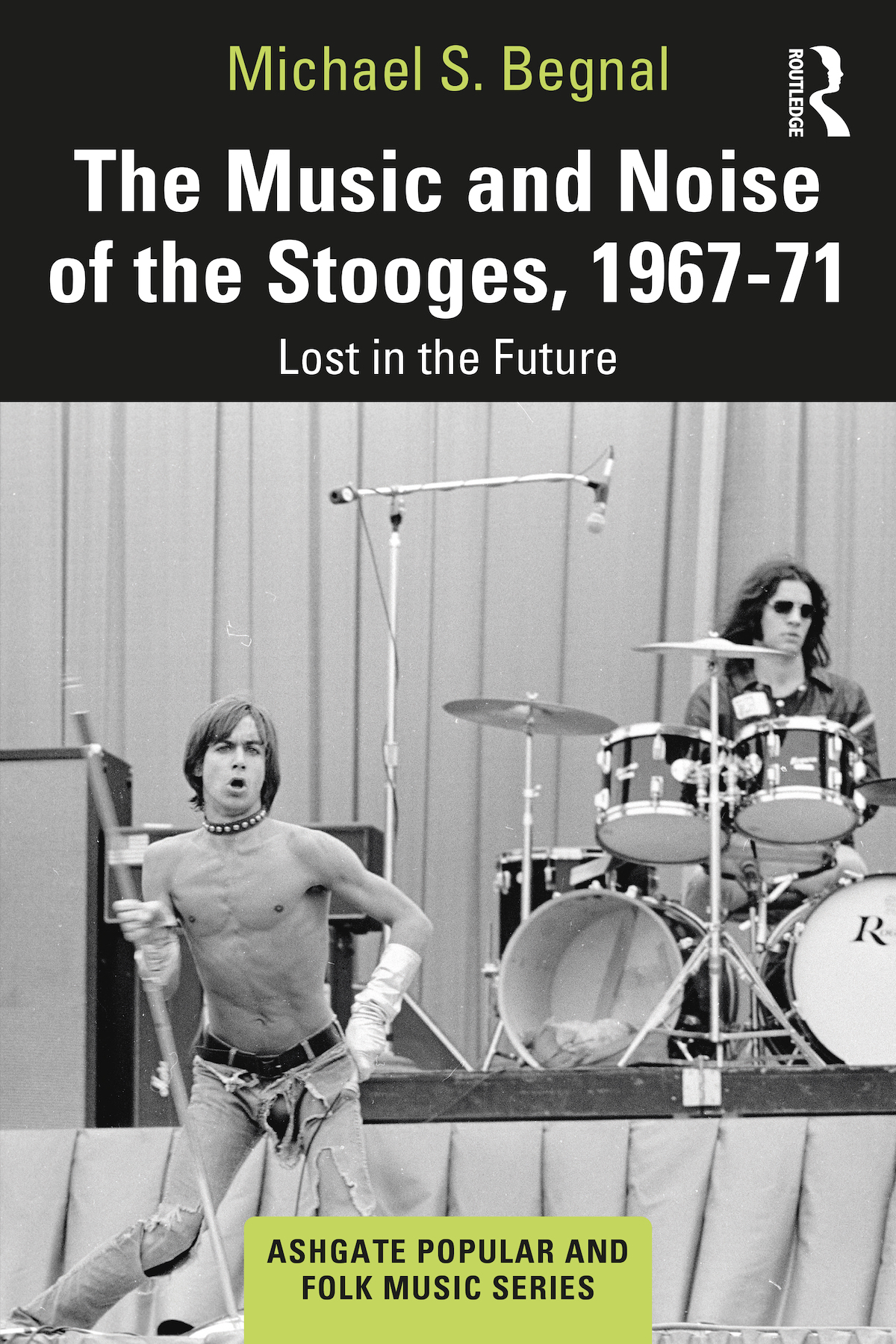 The Music and Noise of the Stooges, 1967-71: Lost in the Future
The Music and Noise of the Stooges, 1967-71: Lost in the Future
By Michael S. Begnal
THE EDITED PRESS RELEASE: “The Stooges have come to be considered one of the most important rock bands, especially in regard to the formation of punk. By emphasizing their influence on later developments, however, critics tend to overlook the significance of the band in their own context and era. The Music and Noise of the Stooges, 1967-71 addresses such oversights. Utilizing the lenses of cultural criticism and sound studies (drawing on the thinking of Theodor Adorno, Jacques Attali and Pierre Bourdieu, among others), as well as contemporary and archival texts, this extensively researched study analyzes the trajectory and musical output of the original Stooges. During the late 1960s and early ’70s, a moment when the dissonant energy of rock’n’roll was more than ever being subsumed by the record industry, the Stooges were initially commercial failures, with the band’s “noisy” music and singer Iggy Pop’s “bizarre” onstage performances confusing their label, Elektra Records. As Michael S. Begnal argues, The Stooges embodied a tension between market forces and an innovative, avant-garde artistic vision, as they sought to liberate audiences from passivity and stimulate an immanent joy in the rock ’n’ roll moment. This book offers a fresh perspective on The Stooges that will appeal both to rock fans and scholars (especially in the fields of cultural studies, the long ’60s, musicology, punk studies, and performance studies).”
 David Bowie Outlaw: Essays on Difference, Authenticity, Ethics, Art & Love
David Bowie Outlaw: Essays on Difference, Authenticity, Ethics, Art & Love
By Alex Sharpe
THE EDITED PRESS RELEASE: “This book explores the relevance of David Bowie’s life and music for contemporary legal and cultural theory. Focusing on the artist and artworks of Bowie, this book brings to life, in essay form, particular theoretical ideas, creative methodologies and ethical debates that have contemporary relevance within the fields of law, social theory, ethics and art. What unites the essays presented here is that they all point to a beyond law: To the fact that law is not enough, or to be more precise, too much, too much to bear. For those who, like Bowie, see art, creativity and love as what ought to be the central organising principles of life, law will not do. In the face of its certainties, its rigidities, and its conceits, these essays, through Bowie, call forth the monster who laughs at the law, celebrate inauthenticity as a deeper truth, explore the ethical limits of art, cut up the laws of writing and embrace that which is most antithetical to law, love. This original engagement with the limits of law will appeal to those working in legal theory, ethics and law and popular culture, as well as in art and cultural studies.”
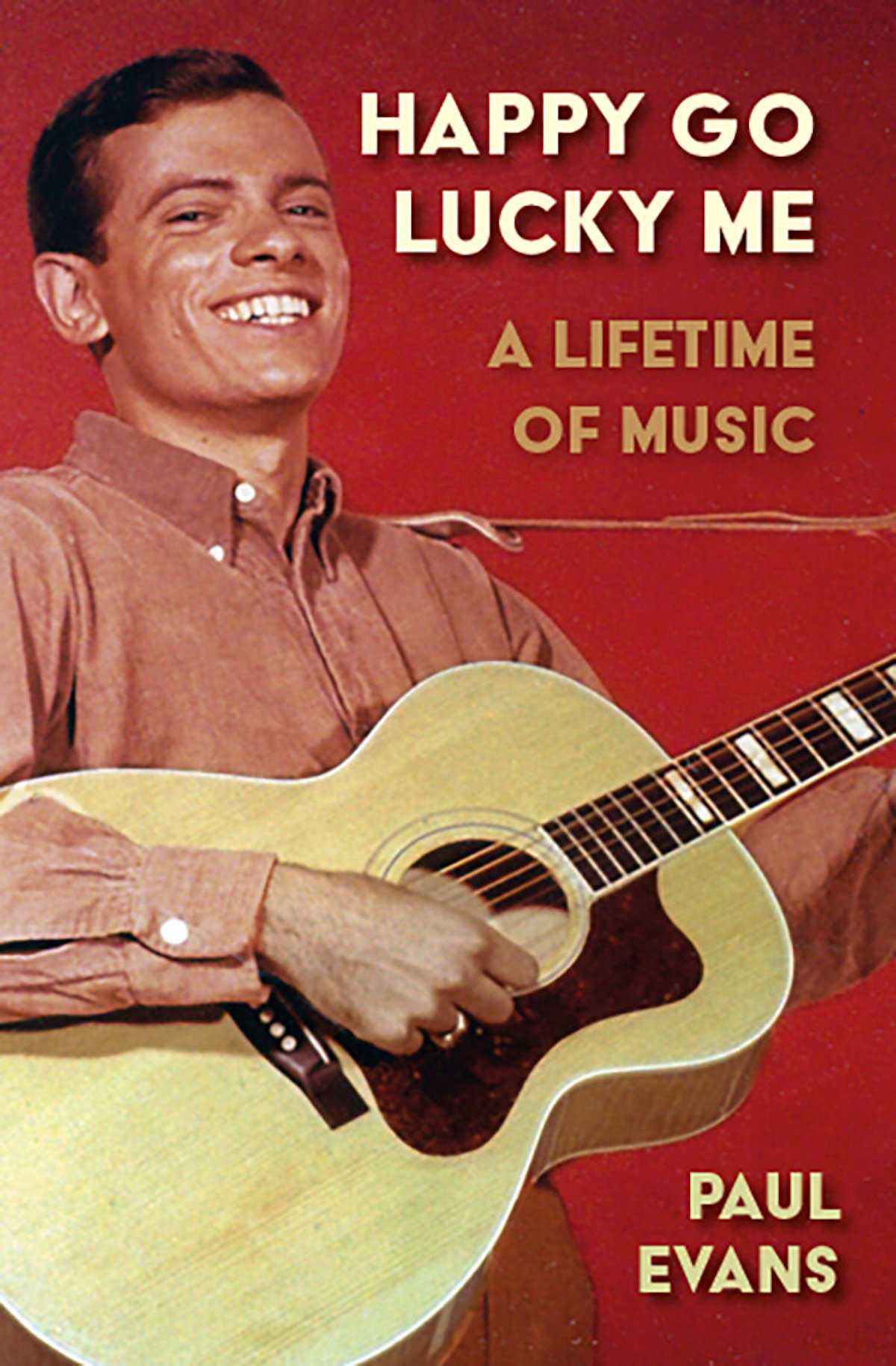 Happy Go Lucky Me!: A Lifetime of Music
Happy Go Lucky Me!: A Lifetime of Music
By Paul Evans
THE EDITED PRESS RELEASE: “As a songwriter, Paul Evans has written hits for himself as well as Bobby Vinton (the 1962 classic, Roses Are Red, My Love), the Kalin Twins (When in 1957), Elvis Presley (The Next Step Is Love, I Gotta Know) and more. A list of other recording artists who have recorded his songs is too long to write down here. His songs have been featured in movies (Martin Scorsese’s Goodfellas and John Waters’ Pecker), television shows (Scrubs, 11.22.63) and commercials. He also wrote an off-off Broadway show, Cloverleaf Crisis, and the theme for the network television show CBS This Morning.”
 Female Force: Tina Turner
Female Force: Tina Turner
By Michael Frizell
THE EDITED PRESS RELEASE: “The greatest comeback of all time is explored in this new comic book biography of the iconic and indomitable Tina Turner! Born Anna Mae Bullock, Tina started her life as a singer in her local church and elementary schools. Her ill-fated relationship with Ike Turner coincided with her meteoric rise up the charts and led to her eventual fall. After retooling her image, Tina once again exploded on the scene in the ’80s. Tina’s life story is rags to riches to rags and back again tale of love, loss, and rebirth. With special cover by famed artist Joe Phillips. The Female Force imprint features prominent and influential authors, business executives, entertainers, journalists, politicians, and activists.”
 Nigel Kennedy Uncensored!
Nigel Kennedy Uncensored!
By Nigel Kennedy
THE EDITED PRESS RELEASE: “Nigel Kennedy changed the course of classical music in the late 1980s with his interpretation of Vivaldi’s Four Seasons. He was revolutionary: In his performance and presentation; in his technique and his open-minded attitude. A natural boundary-pusher and musical adventurer, Nigel Kennedy blew minds — and sales records — as he became the best-selling violinist of all time. Instead of an Introduction, Nigel opens with a tongue-in-cheek Warning: Readers should beware of his politically incorrect writing style and his frank take on The BBC, record companies, the Bavarian police and any other ‘self-appointed wielders of power.’ It sets the tone for a truly original memoir that is as playful, unconventional and carefully executed as his music. The book is structured like a musical performance, with Interludes, Outros and an Encore separating the regular chapters which cover Nigel’s life story, from his humble beginnings and scholarship to the newly created Yehudi Menuhin School — and then New York at The Juilliard School — to his flourishing career and breakthrough as a world-class superstar. Interludes cover subjects varying from Nigel’s best and worst gigs (“It might seem strange that shit gigs stick in the mind so much more than the good ones but I suppose it makes sense.”), to run-ins with rock stars and police forces around the world. Outros cover Nigel’s thoughts on classical music today — fascinating reading from the perspective of a virtuoso — to Brexit, where the spelling of the word alone leaves the reader in little doubt as to which side of the fence the author sits. Encores is a comprehensive section on Nigel’s recorded output, covering his early classical work, the Four Seasons and later albums. There are insights into his work with rock musicians including Robert Plant, the late drummer Michael Lee, Killing Joke singer Jaz Coleman, and producers Eddie Kramer (Jimi Hendrix) and John Leckie (Stone Roses). “My whole life has been spent breaking down barriers between people and this book is proof of that.” states Nigel in his Warning. It’s a mission statement borne out in Uncensored with aplomb.”
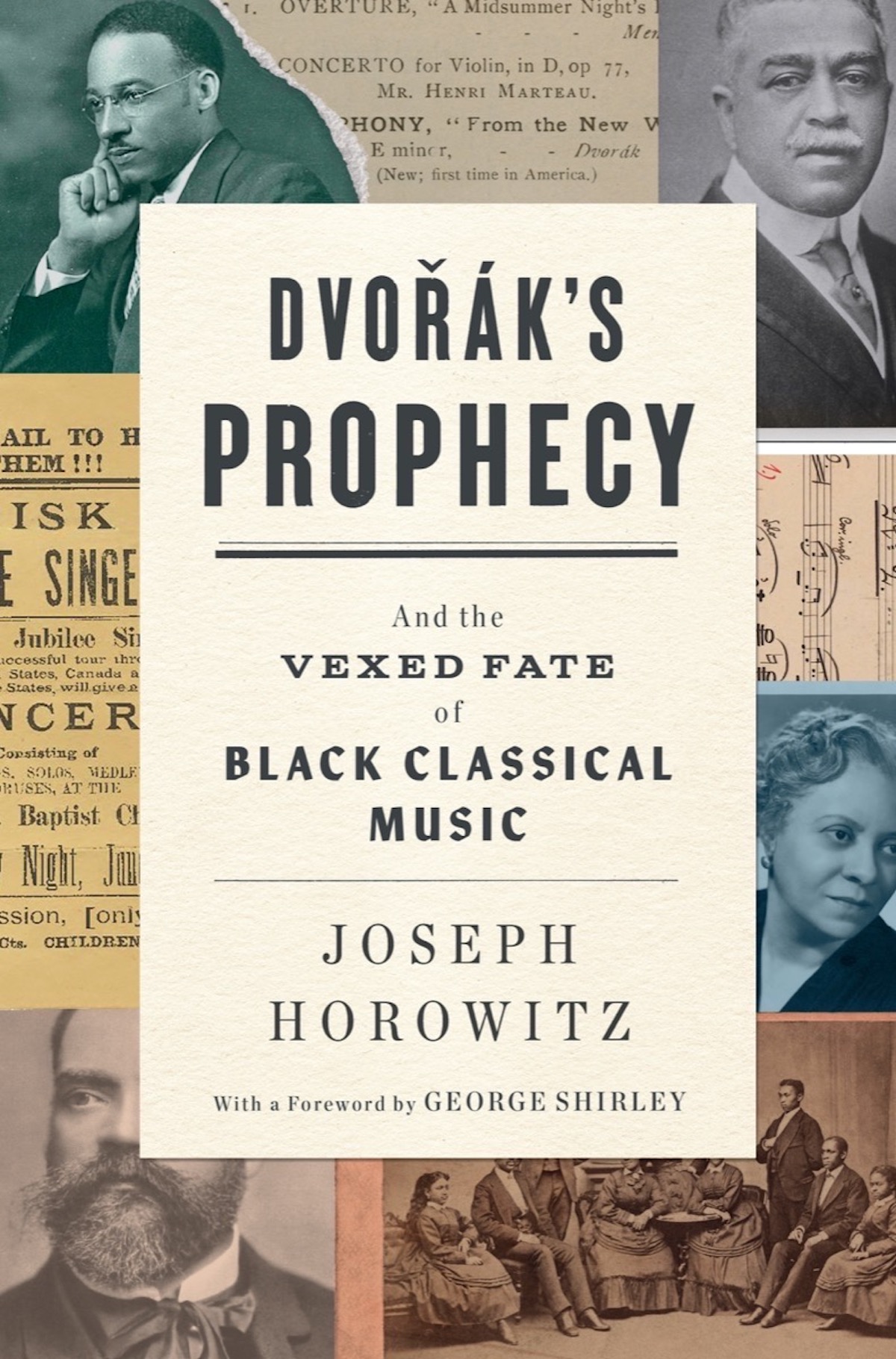 Dvorak’s Prophecy: And the Vexed Fate of Black Classical Music
Dvorak’s Prophecy: And the Vexed Fate of Black Classical Music
By Joseph Horowitz
THE EDITED PRESS RELEASE: “In 1893 the composer Antonin Dvorák prophesied a “great and noble” school of American classical music based on the searing “negro melodies” he had excitedly discovered since arriving in the United States a year before. But while Black music would found popular genres known the world over, it never gained a foothold in the concert hall. Joseph Horowitz ranges throughout American cultural history, from Frederick Douglass and Huckleberry Finn to Gershwin’s Porgy and Bess and the work of Ralph Ellison, searching for explanations. Challenging the standard narrative for American classical music fashioned by Leonard Bernstein and Aaron Copland, he looks back to literary figures — Emerson, Melville and Twain — to ponder how American music can connect with a “usable past.” The result is a “new paradigm” that makes room for Black composers including Harry Burleigh, Nathaniel Dett, William Dawson and Florence Price to redefine the classical canon.”
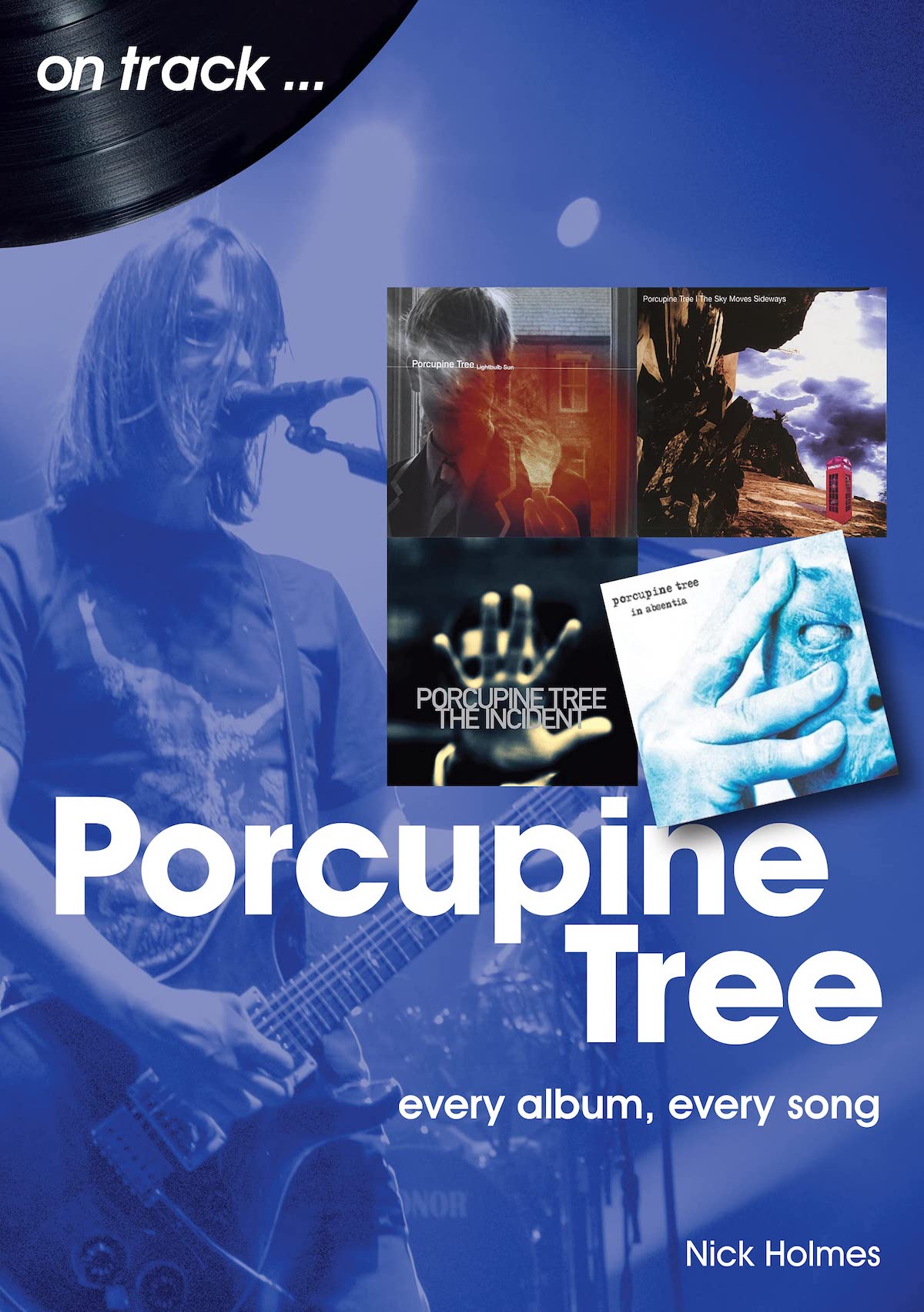 Porcupine Tree: Every Album, Every Song
Porcupine Tree: Every Album, Every Song
By Nick Holmes
THE EDITED PRESS RELEASE: “Porcupine Tree began in 1987 as a solo project for Steven Wilson writing and recording music in his bedroom, but became a four-piece band when Steven was joined by Richard Barbieri, Colin Edwin and Chris Maitland (later replaced by Gavin Harrison). Their first live gig was in a pub in High Wycombe, England in 1993 but by 2010 the band had toured Europe and America extensively and ended up playing to thousands of fans at a sold-out Royal Albert Hall in London. The band was nominated for two Grammy awards, and their last album The Incident charted in the top 30 in both the U.K. and the U.S. Although often labelled as a progressive rock band, Porcupine Tree constantly innovated, and changed style. Beginning playing psychedelic music, Porcupine Tree experimented with space rock, dance, trance, melodic pop as well as prog rock. In their last few albums, the band created a new hybrid of progressive metal riffs, melodic strength and rich vocal harmonies, with strong lyrics and powerful concepts. This aspect of the band has provided their most enduring legacy. This books analyses Porcupine Tree’s 10 studio albums and two EPs in forensic detail, illuminating them for existing and potential new fans alike.”
 Tori Amos: Every Album, Every Song
Tori Amos: Every Album, Every Song
By Lisa Torem
THE EDITED PRESS RELEASE: “In 1992, Singer, pianist and composer Tori Amos achieved fame with the intensely personal solid gold record, Little Earthquakes, the first of 15 studio albums. Each new recording cut new ground both musically and thematically. Since then, Amos has performed world-wide, both as a soloist and also accompanied, by a rhythm section, an octet or an orchestra. Her projects have ranged from the musical A Light Princess to the classically inspired Night of Hunters. Her Grammy nominations include Best Alternative Album for Under The Pink, Boys for Pele and From The Choirgirl Hotel, and Best Female Rock Vocal Performance for Strange Little Girls. Amos was the first female artist to chart in the Billboard Top 10 in the Classical, Alternative and Rock genres simultaneously for Night of Hunters. Amos has also published two biographies: Piece by Piece and Resistance, which delve deeply into her songwriting strategies and political perspectives. She has been strongly involved in Native American issues and was the first spokesperson for RAINN, the largest, anti-sexual violence organization in the U.S. This book provides a track-by-track analysis of those essential recorded works, starting from Tori Amos’s late 1980s synth-pop beginnings through 2017’s illuminating Native Invader.”
 The Cardiacs: Every Album, Every Song
The Cardiacs: Every Album, Every Song
By Eric Benac
THE EDITED PRESS RELEASE: “When Tim Smith died in July of 2020, he left behind a legion of adoring fans and an honorary doctorate in music. Not bad for someone who never had a top 10 hit and whose music was so infamous during its heyday, that some magazines not only refused to review his work, but edited out praise from fellow musicians. But who was Tim Smith? He was the composer, guitarist, singer, and lyricist for cult band The Cardiacs. Working in the ’70s up to 2008, Smith and his rotating band of musicians created some of the most intricate and original music of all time. They combined punk energy, prog complexity, ska rhythms, heavy metal drama, and much more with an absurd and satirical lyrical stance, while creating a confrontational on-stage image that inspired as many as it appalled. Eric Benac examines each Cardiacs album (including the never-repressed, cassette-only albums) and side projects, like the sublime prog-folk of Sea Nymphs, the warped psychedelics of Spartley’s Japs, and the twisted Brit Pop of Tim’s solo album. Each song is discussed both musically and lyrically, with a photo section containing original shots from Cardiacs fans.”
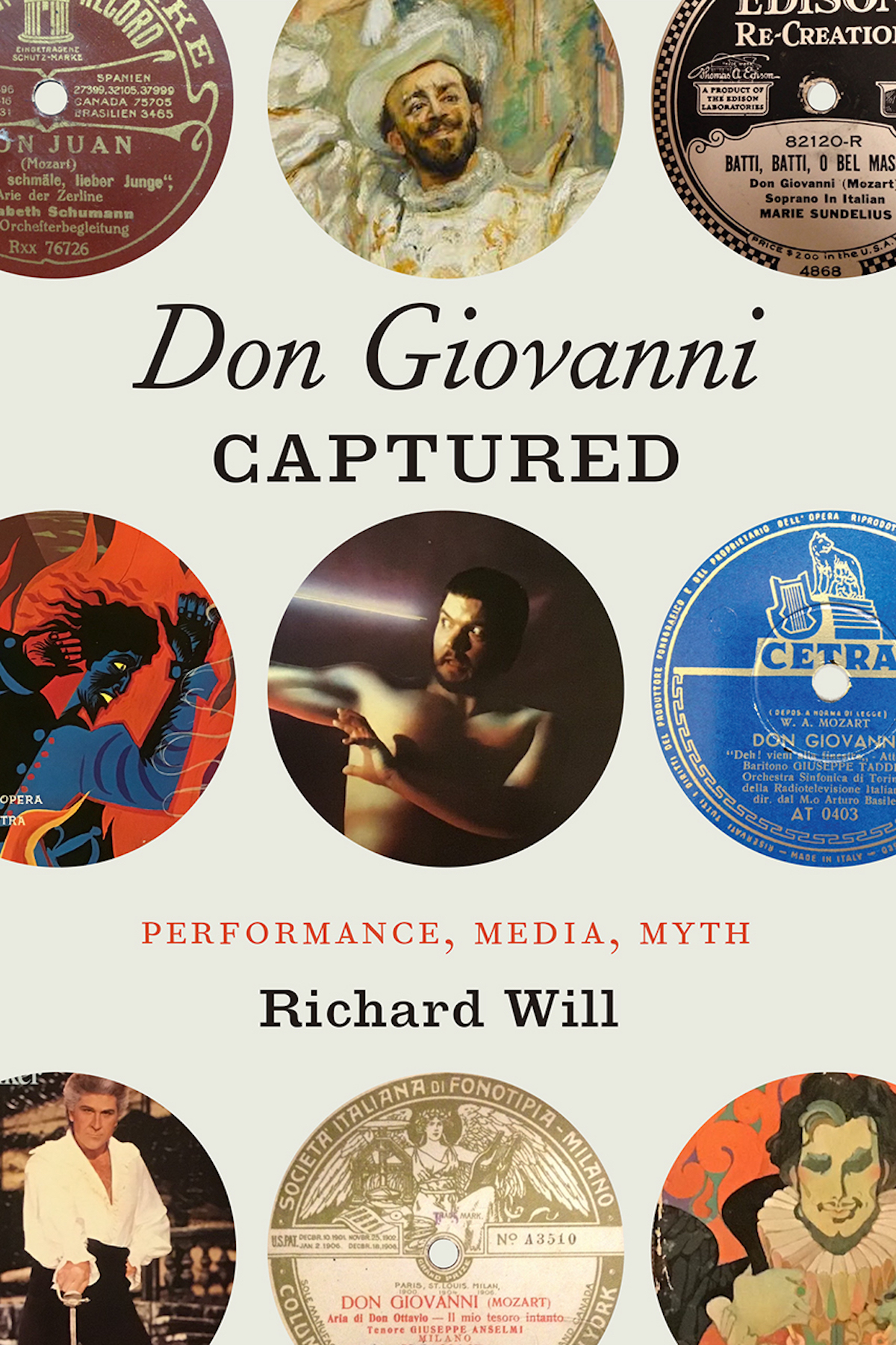 Don Giovanni Captured: Performance, Media, Myth
Don Giovanni Captured: Performance, Media, Myth
By Richard Will
THE EDITED PRESS RELEASE: “Mozart’s opera Don Giovanni has long inspired myths about eros and masculinity. Over time, its performance history has revealed a growing trend toward critique — an increasing effort on the part of performers and directors to highlight the violence and predatoriness of the libertine central character, alongside the suffering and resilience of his female victims. In Don Giovanni Captured, Richard Will sets out to analyze more than a century’s worth of recorded performances of the opera, tracing the ways it has changed from one performance to another and from one generation to the next. Will consults both audio recordings, starting with wax cylinders and 78s, as well as video recordings, including DVDs, films, and streaming videos. Seen as a historical record, opera recordings are a potent reminder of the refusal of works such as Don Giovanni to sit still. As Will points out, recordings and other media shape our experience of opera as much as live performance. By choosing a work with such a rich and complex tradition of interpretation, Will helps us see Don Giovanni as a standard-bearer for evolving ideas about desire and power, both on and off the stage.”
 Listening to the Lomax Archive: The Sonic Rhetorics of African American Folksong in the 1930s
Listening to the Lomax Archive: The Sonic Rhetorics of African American Folksong in the 1930s
By Jonathan W. Stone
THE EDITED PRESS RELEASE: “In 1933, John A. Lomax and his son Alan set out as emissaries for the Library of Congress to record the folksong of the “American Negro” in several southern African-American prisons. Listening to the Lomax Archive: The Sonic Rhetorics of African American Folksong in the 1930s asks how the Lomaxes’ field recordings — including their prison recordings and a long-form oral history of jazz musician Jelly Roll Morton — contributed to a new mythology of Americana for a nation in the midst of financial, social, and identity crises. Jonathan W. Stone argues that folksongs communicate complex historical experiences in a seemingly simple package, and can thus be a key element — a sonic rhetoric — for interpreting the ebb and flow of cultural ideals within contemporary historical moments. He contends that the Lomaxes, aware of the power folk music, used the folksongs they collected to increase national understanding of and agency for the subjects of their recordings (including the reconstitution of prevailing stereotypes about African American identity) even as they used the recordings to advance their own careers. Listening to the Lomax Archive gives readers the opportunity to listen in on these seemingly contradictory dualities, demonstrating that they are crucial to the ways that we remember and write about the subjects of the Lomaxes archive and other repositories of historicized sound.”















